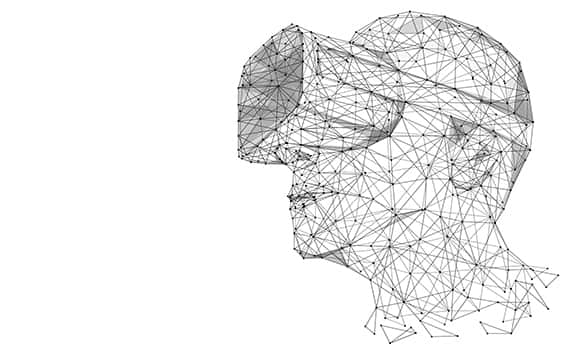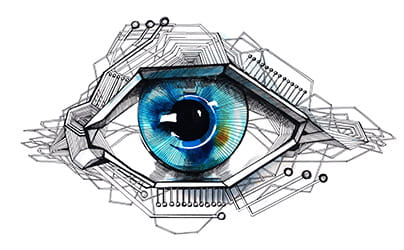Virtual Reality and Copyright: Combining New Concepts with the Old
Introduction
 It is a strange thing to look into the world of technology on occasion and genuinely be surprised by the significant leaps of progress that have taken place. In a way, it is almost impossible to consider the future as a lay-person truly. There are concepts which one day seem hopeless and nothing more than a dream of science fiction authors. Suddenly before you know it, those concepts are entering reality. Once an exciting and game-changing product becomes a reality, it often makes a significant impact and truly bursts on to the scene.
It is a strange thing to look into the world of technology on occasion and genuinely be surprised by the significant leaps of progress that have taken place. In a way, it is almost impossible to consider the future as a lay-person truly. There are concepts which one day seem hopeless and nothing more than a dream of science fiction authors. Suddenly before you know it, those concepts are entering reality. Once an exciting and game-changing product becomes a reality, it often makes a significant impact and truly bursts on to the scene.
Virtual Reality (VR) is a prime example of this. Go back just a decade or so and few people would have been expecting it to exist on the current scale we see today. It would have seemed a crazy prospect then, and yet now few will say that VR was not a logical move to take in the world of technology. An even better and more evolved idea would be the smartphone. These have been around for some time now, and it seems crazy to imagine a world without a smartphone in the hands and pockets of practically everyone. They provide so much that many would be unable to live without. Examples of this include access to critical information anywhere and anytime, access to the internet and far more. In the twelve years since though, the number of smartphone brands has become impossible to keep track of and the amount still arising is substantial.
VR is currently still in its earliest stages, though its audience size is growing. Consider the likes of the movie ‘Ready Player One’. In this movie, the world is depicted as being taken over by VR technology with everyone owning a system and the world almost revolving around it. Very few people will consider this to be an outlandish or overly distant prospect. Yes, we are certainly not quite at that level yet, though the groundwork is currently forming. VR is already becoming available to a significant degree with different levels available covering different niches of the market. There are cheap and straightforward forms which require phones along with a plastic (or even cardboard for the likes of the Google Cardboard) headset. Even more expensive types of VR are selling well, with the likes of the Sony PlayStation VR Headset having sold over 4 million units to date.
One of the crucial aspects of this groundwork and perhaps one of the most important is that of the laws surrounding the technology. Of course, the law is like an ocean in terms of its depth and the areas it covers, though the area that will receive consideration here is that of copyright and VR.
Copyrighting Virtual Creation
One aspect of human nature that is significantly awakened within many when it comes to VR is that of creating or producing something. This creativity can yield amazing results, and as time goes on, we will surely see things that are impossible for most to imagine. These works though, are still tied to an individual or specific entity, and for true creative protection, copyright regulation will have to adapt to the unique aspects of VR creations. While creating in a virtual world, many tools are utilised therein and only there.
Further to this, unlike a painting or a book, it is possible to interact with creation like never before. Imagine touching and exploring something in unprecedented depth, as if it were physically present, though it was nothing more than pixels on a headset. In a way, it is an entirely digital creation though it can be analysed and interacted with as if it were physically present.
At a basic level, many jurisdictions have copyright regulations in place, and these will have been at work for many years now. Copyright provides the creator of any original idea or Intellectual Property with protection over the specific design, preventing its usage by others without the permission of the original owner. This concept still stands when it comes to VR as any creation, including those that are virtual, can receive protection through many current copyright rules.
Specific mentions of VR are sparse within these texts though. It can, therefore, be assumed that the unique position of VR, being something of a middle ground between reality and digital works, might cause some issues to arise. However, at this time, registering a product or application in virtual reality requires any individual or entity to take the same steps as registering normal digital products. There are no special processes present at this time.
Issues may arise as we head into the future with questions surrounding the nature of the digital products becoming prominent. With the greater level of realism and immersion available through VR, questions will arise. A crucial one of these will consider whether differing processes for application registration and copyright should exist. However, for now, the processes are the same.
VR creations cannot be utilised by others digitally or contained in their work without the permission of the original owner and the full period of protection applies. However, it is also not permitted to replicate products from the real world directly in Virtual Reality. The reasons for this limitation is due to the closeness in nature between the two.
One significant case on the matter of VR is that of Zenimax Media INC. And ID Software, LLC v Oculus VR LLC, Palmer Luckey, Facebook INC. Brendan Iribe and John Carmack. Zenimax’s [Tex. Civil Case No. 3:14-CV-01849-P] claim related to violation of non-disclosure agreement terms and also copyright infringement. There was a further claim for the theft of trade secrets for which Zenimax was demanding USD 6 billion, though this was dismissed. However, on the additional two matter, Zenimax and ID were awarded USD 500 million.
This case is especially significant as it related to the formation of the virtual reality technology as a whole and so it was an extremely high stakes case. This matter was furthered by the purchase of Oculus by Facebook just prior.
There are not many cases, especially of this scale in the world of VR at the moment. Once again, this is because the technology is still in its infancy and very much uncharted territory. In time to come, there will undoubtedly arise many more cases, though this is the most considerable at this time.
 However, speaking in general terms, copyright regulations around the world can cover Virtual Reality as they exist now. The rules in the likes of the US, EU and UAE do not prevent the copyrighting of VR content or applications. The legislations covering the copyright of any digital content would be sufficient. The US has its Copyright Act of 1976 while the EU has the multiple directives on the topic. The primary guideline is Directive 2019/790. UAE Federal Law Number 7 of 2002 covers this, and Article 2 specifies in subsection 2, that computer programs and applications are covered. In time, there will undoubtedly be updates and amendments to these regulations to incorporate the concepts expressly. Copyrights are arguably not the primary area of concern for VR. There are further subject matters which have to be answered in the future and so of the crucial issues concern:
However, speaking in general terms, copyright regulations around the world can cover Virtual Reality as they exist now. The rules in the likes of the US, EU and UAE do not prevent the copyrighting of VR content or applications. The legislations covering the copyright of any digital content would be sufficient. The US has its Copyright Act of 1976 while the EU has the multiple directives on the topic. The primary guideline is Directive 2019/790. UAE Federal Law Number 7 of 2002 covers this, and Article 2 specifies in subsection 2, that computer programs and applications are covered. In time, there will undoubtedly be updates and amendments to these regulations to incorporate the concepts expressly. Copyrights are arguably not the primary area of concern for VR. There are further subject matters which have to be answered in the future and so of the crucial issues concern:
- Rights of ownership of products based entirely in Virtual Reality.
- Health and safety regulations.
One comparison that is here is to cases that arose against Nintendo concerning their Wii console. Due to the nature and exertion of the motion controls, there were reports of individuals sustaining injuries as a result of playing with the system, and specific individuals sued the company. Some of the injury stories that can be found are quite severe, with people falling and sustaining potentially life-threatening injuries as well as individuals exerting themselves, resulting in significant joint issues. A specific case is that of Elvig, et al. v Nintendo of America Inc. No. 08-CV-02616 (D. Colo.) in which a faulty wrist strap resulted in a motion controller being thrown and damaging a TV. However, the court found the claims of the plaintiff to be far too vague with false advertising being the critical claim. Nintendo retorted by stating that adequate warning is provided to customers regarding potential risks. In the end, the court chose to side with the defence.
One of the most common uses for VR is video games, and due to the nature and level of immersion when playing, injuries are certainly a possibility. Disorientation and dizziness are a genuine problem, especially with particular movement heavy games. Further, since the headsets limit all vision to actual surroundings, tripping or falling into hazards is a real issue. However, all headsets are accompanied with warnings and guides on how to appropriately use them, and video games are likewise provided with such messages. An example of why this is required for video games arises as per the UK General Product Safety Regulations of 2005. This law requires companies to provide safety warnings for any foreseeable usage risks that occur when using the product. These warnings act as exclusion clauses for the developers of games or headsets and are accepted in courts as a method of removing liability. The Elvig, et al. v Nintendo of America Inc. No. 08-CV-02616 (D. Colo.) case once again demonstrates this.
- With many creations, another question that arises is that of trademarks and how their management is maintained. As previously mentioned, problems can occur when creating things in virtual space which have a likeness to objects and products that physically exist.
Again, consideration must be provided to the fact that video games are arguably the most common use of VR, and so when applying for trademarks, anything which has a resemblance to the real world will not necessarily be infringing on any rights.
However, in cases where real-world locations are being simulated, and logos or branding is present, issues may then arise.
The crucial point to note and one of the vital deciding factors here is of whether individuals will be confused as to who the owner of the trademarked logos is. The origin of any branding should not be surrounded in any confusion in this way.
The Future of Virtual Reality
It still, even in 2019, feels odd to be thinking about VR and the future. The concept is still just new enough and niche enough to feel like it could all be in our imaginations, though they are far more than that. And existing in the real world, there must be regulations to manage the concept as well as consider and protect creations that are made using it.
Since the concept is still fresh, the regulations in place are often adaptions of laws governing ideas and concepts that most closely mirror VR in their creative nature, and over time, further developments will arrive, and the rules will amend to make the law and the VR technology easier to combine. However, understanding will take time and introducing new laws and modifying old ones takes more time yet.
Copyright is also in a decent position as is, with the basic concepts being applicable to VR without the need for changes. In countries with common law systems, court cases will help to flesh out the specific attitudes towards Virtual Reality concepts, while civil law jurisdictions will require a little more law-making and amending.
 There are other issues besides copyright that are just as significant and in a way, more urgent, such as trademark matters as well as health and safety concerns. Individuals sue entities for all manner of things these days and companies take the most considerable precautions to protect themselves from liability.
There are other issues besides copyright that are just as significant and in a way, more urgent, such as trademark matters as well as health and safety concerns. Individuals sue entities for all manner of things these days and companies take the most considerable precautions to protect themselves from liability.
VR has an exciting future, and futuristic indeed seems an appropriate way to describe the concept. As with any new significant innovation or invention legislation will adapt and rise to meet it and create a secure legal backbone.
 English
English
 عربي
عربي Русский
Русский 官话
官话 português
português
 Türk
Türk 


















